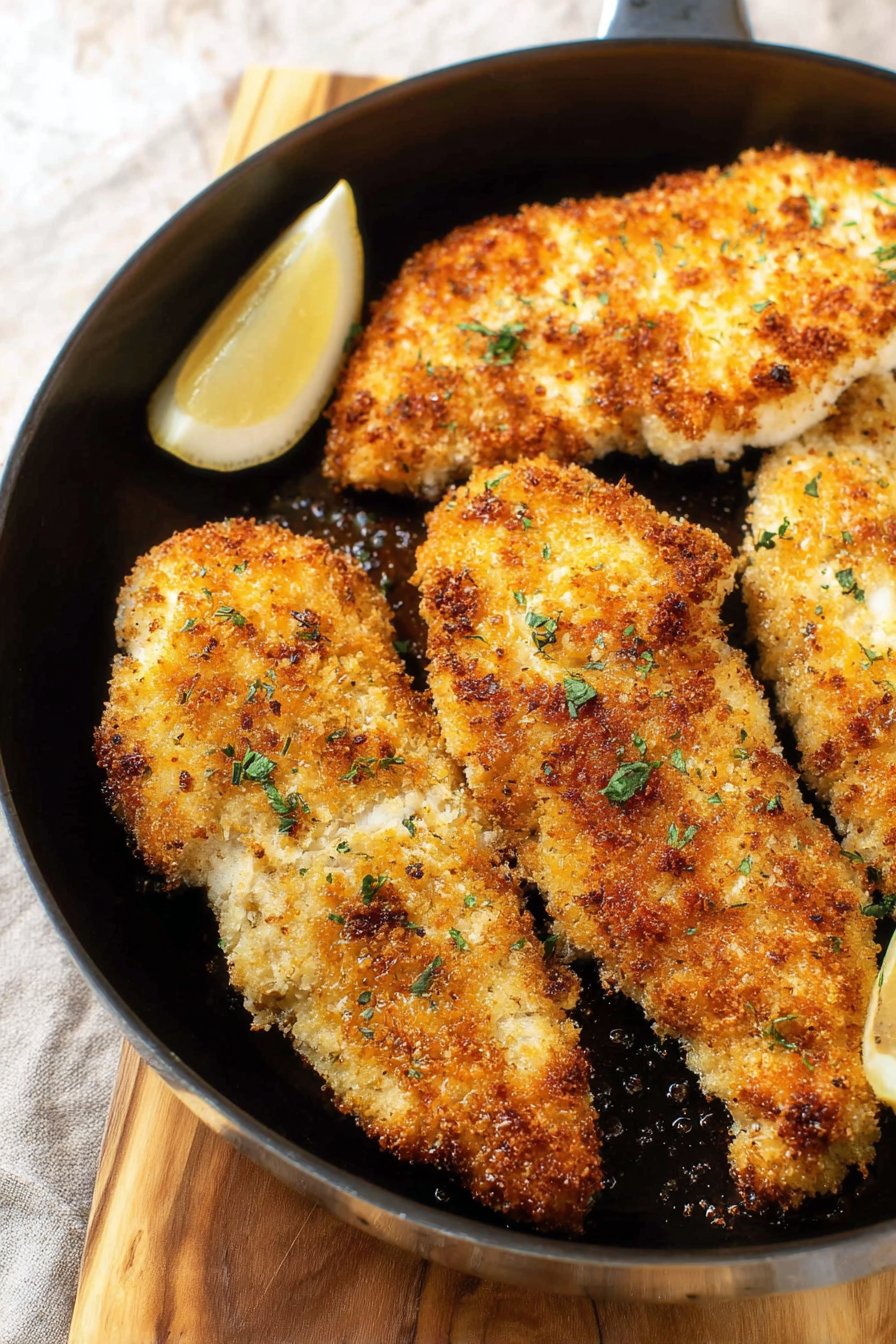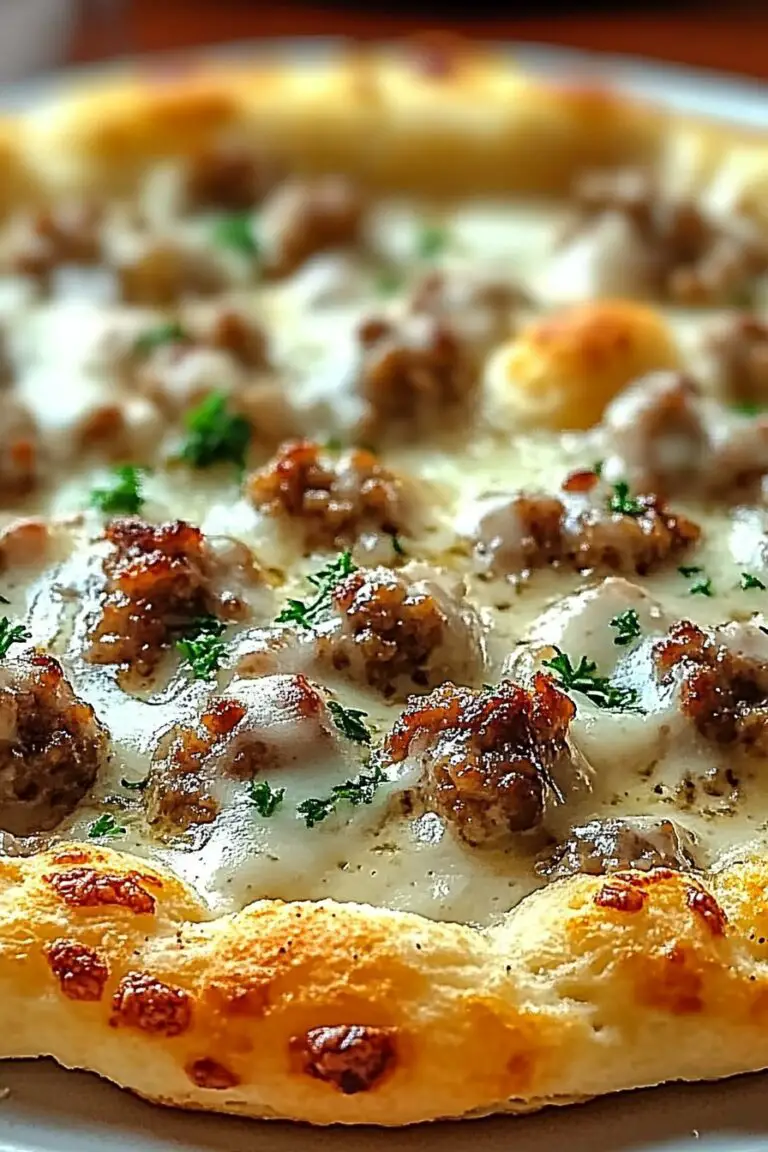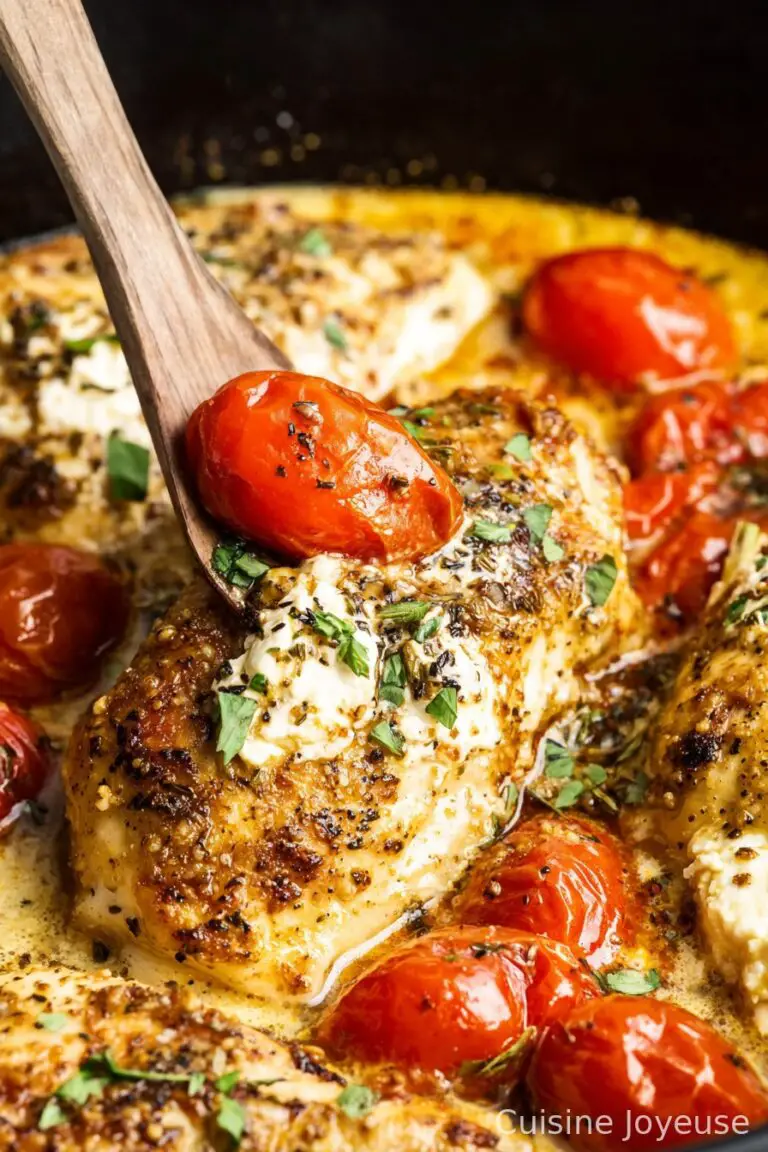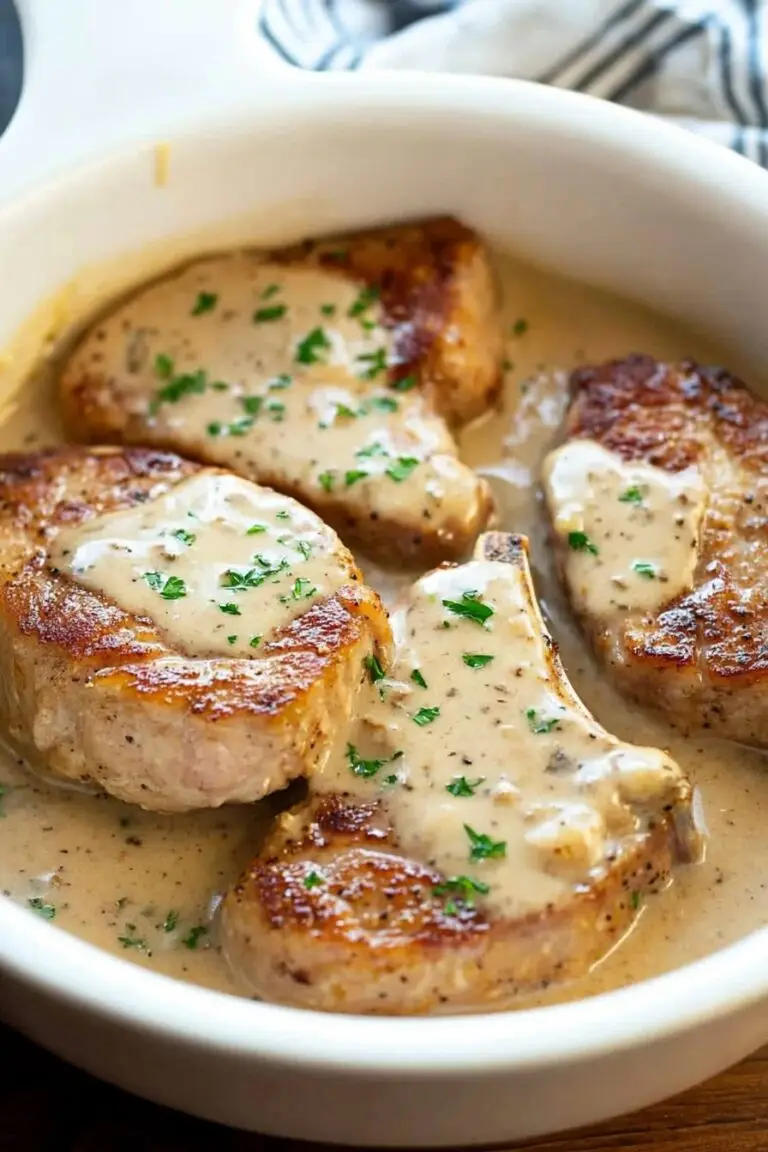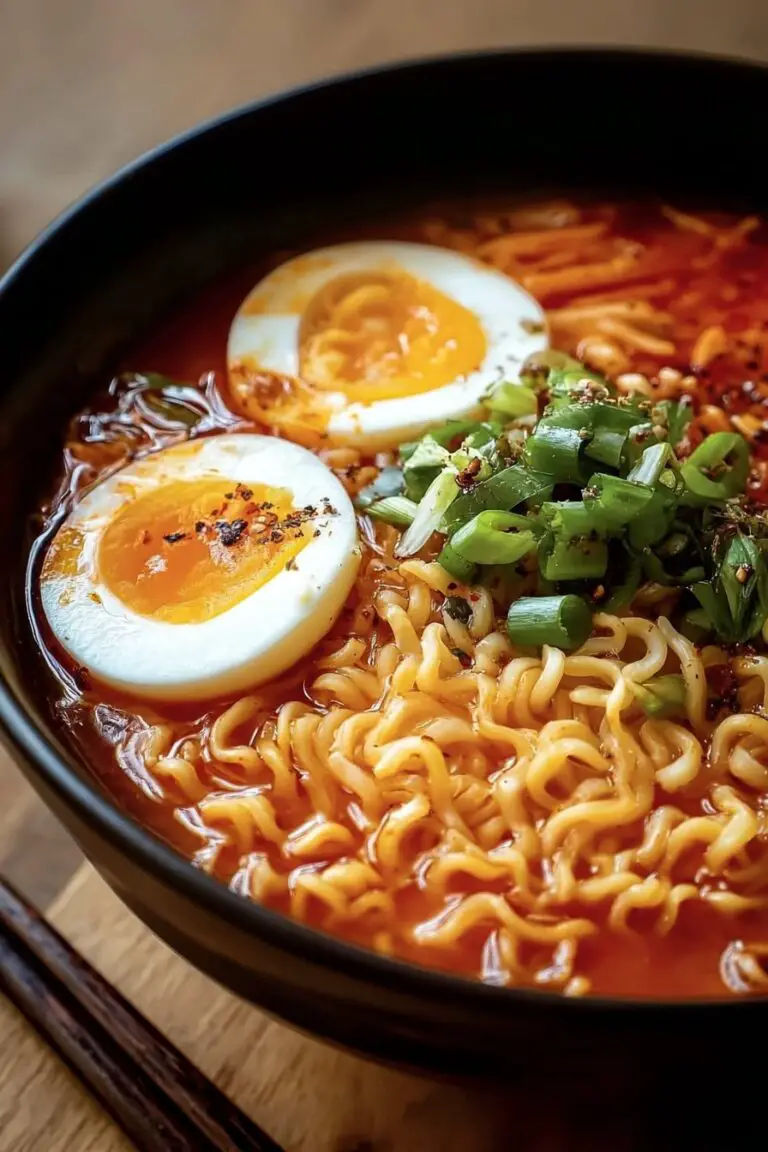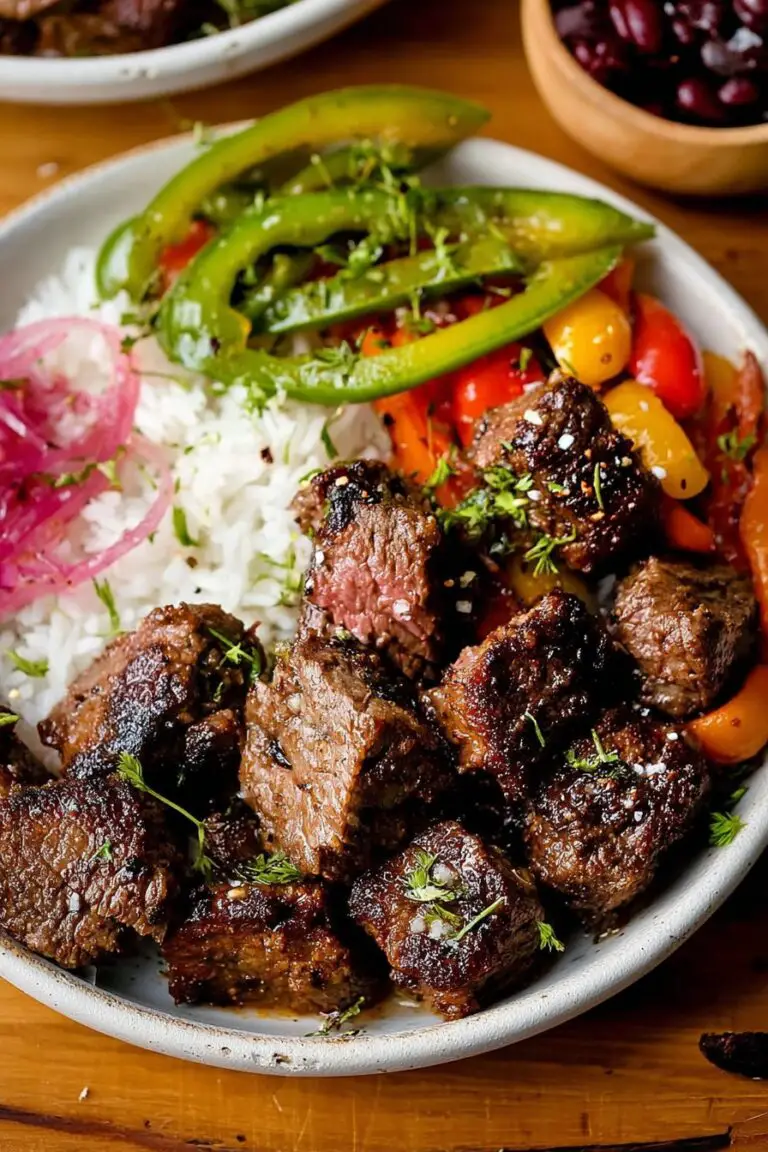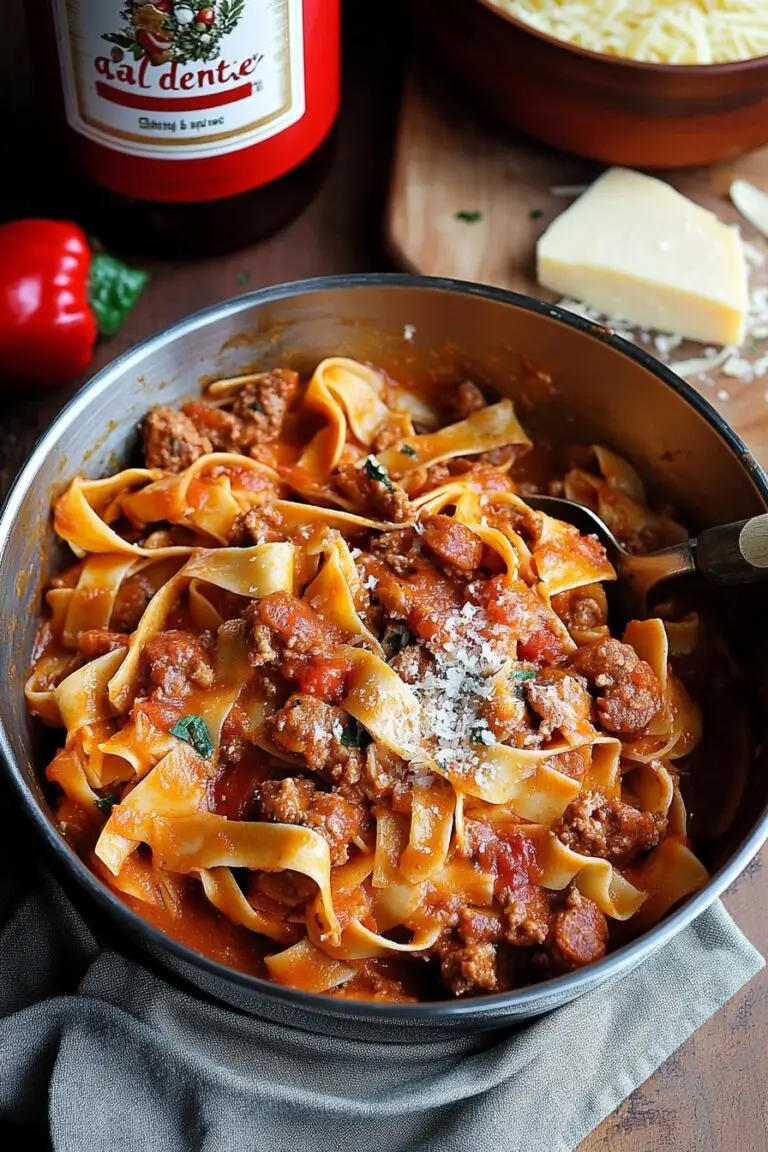Parmesan Crusted Chicken
Let Me Tell You About Parmesan Crusted Chicken (Sit Down, This Won’t Take Long)
Alright, so this isn’t one of those fancy-chef recipes that needs a culinary degree or a sous vide machine. It’s just good old Parmesan Crusted Chicken, and I’ve probably made it more times than I’ve had hot dinners (well, maybe not quite, but you get the idea). I remember the first time I made it, I completely forgot the salt and my brother tried to be polite but you should’ve seen his face. Now I remember the salt! Anyway, it’s the sort of dish that’s so simple it almost feels like cheating, but everyone acts like you spent hours. (I mean, I’m not stopping them!)
Why You’ll Love This (Or At Least, Why I Do)
I make this whenever I need dinner on the table fast, and I can’t face another night of scrambled eggs. My family goes a bit wild for it, especially if I sneak in extra cheese. The crust gets all golden and crisp (if you don’t wander off and burn it, which, guilty). Plus, you can use it for sandwiches or on top of a salad if you’re feeling fancy. Sometimes I get annoyed at the mess, but honestly, it’s worth it. I had a disaster once when I tried using that shaker Parmesan instead of the real stuff — don’t recommend, but hey, you live and learn.
What You’ll Need (With a Few Swaps)
- 2 large chicken breasts (or 4 small; I sometimes use thighs if that’s what’s in the fridge)
- 1 cup of grated Parmesan cheese (the real stuff; but my friend swears the pre-shredded works in a pinch – your call)
- 1 cup of breadcrumbs (panko is my go-to, but regular is fine; once used crushed cornflakes and it was surprisingly good!)
- 1/2 teaspoon salt (don’t forget, trust me)
- Black pepper, a few cracks
- 1 teaspoon garlic powder (optional, but I like it for a little oomph)
- 2 eggs (if you run out, a quick splash of milk will do but it’s not quite the same)
- 2 tablespoons olive oil (or whatever you have; butter is a treat, though it browns fast)
How I Throw This Together (And Sometimes Mess Up)
- Pound the chicken. I put the chicken between two bits of baking paper and bash it with a rolling pin. Or a heavy book, if no one’s watching. You’re aiming for roughly 1/2 inch thick.
- Mix the coating. In one bowl, whisk the eggs with a fork. In another, stir together the breadcrumbs, Parmesan, salt, pepper, and garlic powder. (This is where I usually sneak a bite of the cheese. Quality control, right?)
- Dredge and coat. Dip each piece of chicken first in the egg, then press it into the breadcrumb-Parmesan mix. Sometimes I double coat if I’m feeling extra; just repeat the process.
- Heat your pan. Drizzle olive oil in a big frying pan over medium heat. I always wait until it’s shimmering — otherwise, you get soggy crust, and nobody wants that.
- Cook. Chicken goes in. Cook about 4-5 minutes a side, until golden brown and cooked through. If it looks a bit odd halfway, don’t panic, it evens out. (And don’t move it too much! Let that crust get nice and crispy.)
- Let it rest. Transfer to a plate and let it sit a couple minutes. Actually, this makes it juicier. That’s not just chef talk.
- Serve straight away, or slice up for a sandwich, or on top of a heap of greens. Up to you.
Notes from My Many Attempts
- If you use super thin chicken, it cooks fast but dries out quick. On second thought, a little thicker is better.
- Sometimes I add chopped parsley to the breadcrumb mix for color — but half the time, nobody notices.
- If the crust sticks to the pan, just pretend it was on purpose. Scrape it up and serve as “crispy bits.”
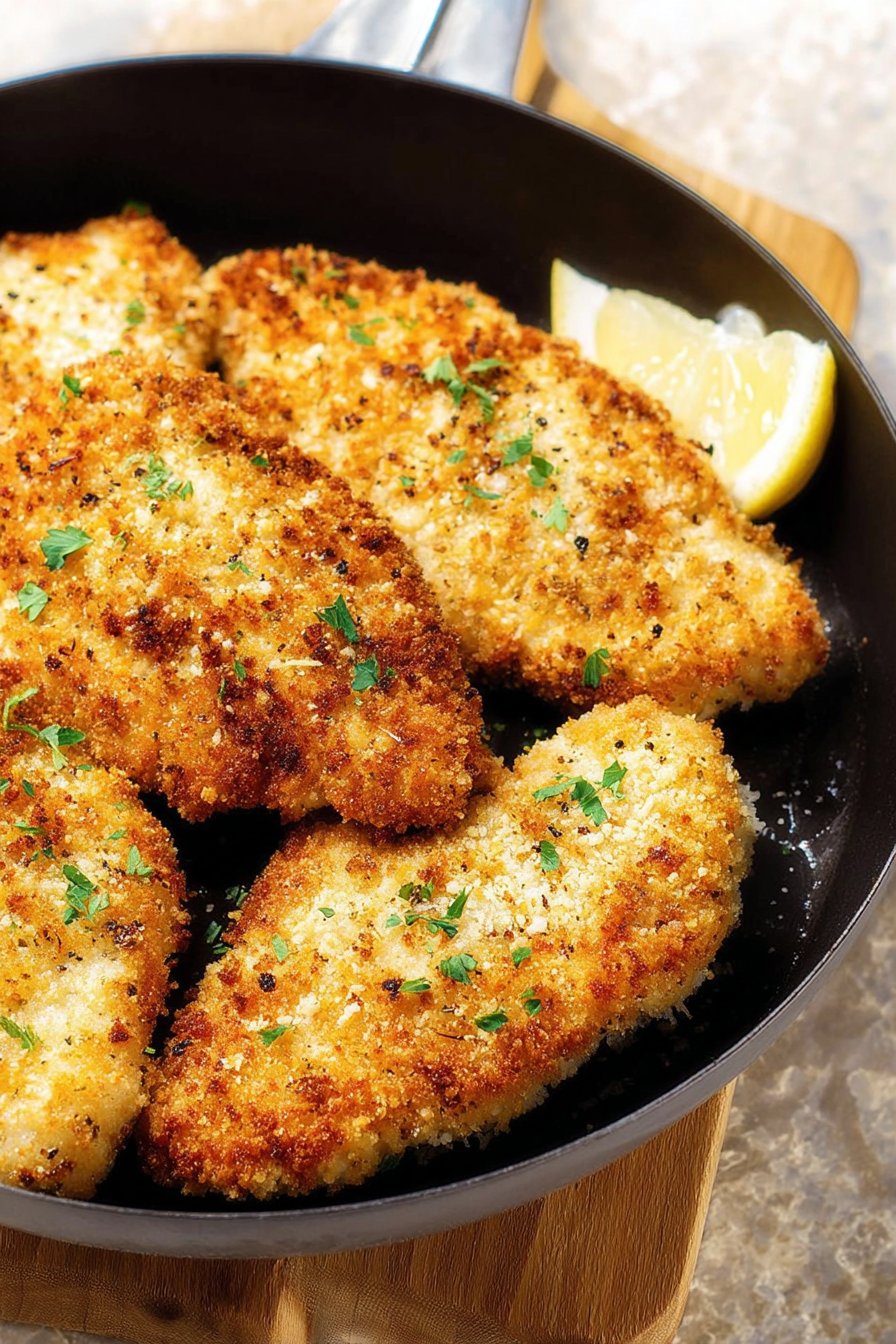
Variations I Keep Coming Back To (and One That Bombed)
- Spicy Crust: Add a pinch of chili flakes or smoked paprika. Perks things up.
- Lemon Zest: Mix in a little zest with the cheese for a fresh twist. Oddly, lime didn’t work as well — learned that the hard way.
- Herby Version: I sometimes stir in a spoonful of dried Italian herbs. Tastes a bit like those bistro chicken cutlets you get in the UK.
- Oven-Baked: Tried baking on a rack instead of frying once. Not as crispy but less mess for sure.
Equipment (But Read This If You Don’t Have Everything)
- Large frying pan (nonstick is nice, but a regular one works; just use more oil)
- Baking paper or clingfilm (for bashing — or a clean tea towel in a pinch)
- Shallow bowls for dredging (I’ve used soup plates when the proper ones were “busy,” ahem)
- Tongs or a spatula (or two forks, if you like to live dangerously)
How I Store Leftovers (But Honestly, They Don’t Last)
Put any leftovers in an airtight container in the fridge. Should be fine for about 2 days, though honestly, in my house it never lasts more than a day! Reheat in a skillet or oven if you want the crust to come back to life (microwaving makes it a bit sad, but still tasty in a sandwich). If you’re curious, this article from Serious Eats has some great tips for reviving breaded food.
How I Like to Serve It (And What My Family Insists On)
Most nights, I just slice it over a simple salad — rocket, tomatoes, bit of balsamic, job done. But when my sister’s over, I have to make mashed potatoes. It’s basically the law. Sometimes I go rogue and put it in a crusty roll with a bit of mayo and lettuce. Oh, and once I made homemade garlic mayo from Bon Appétit and it was a game-changer.
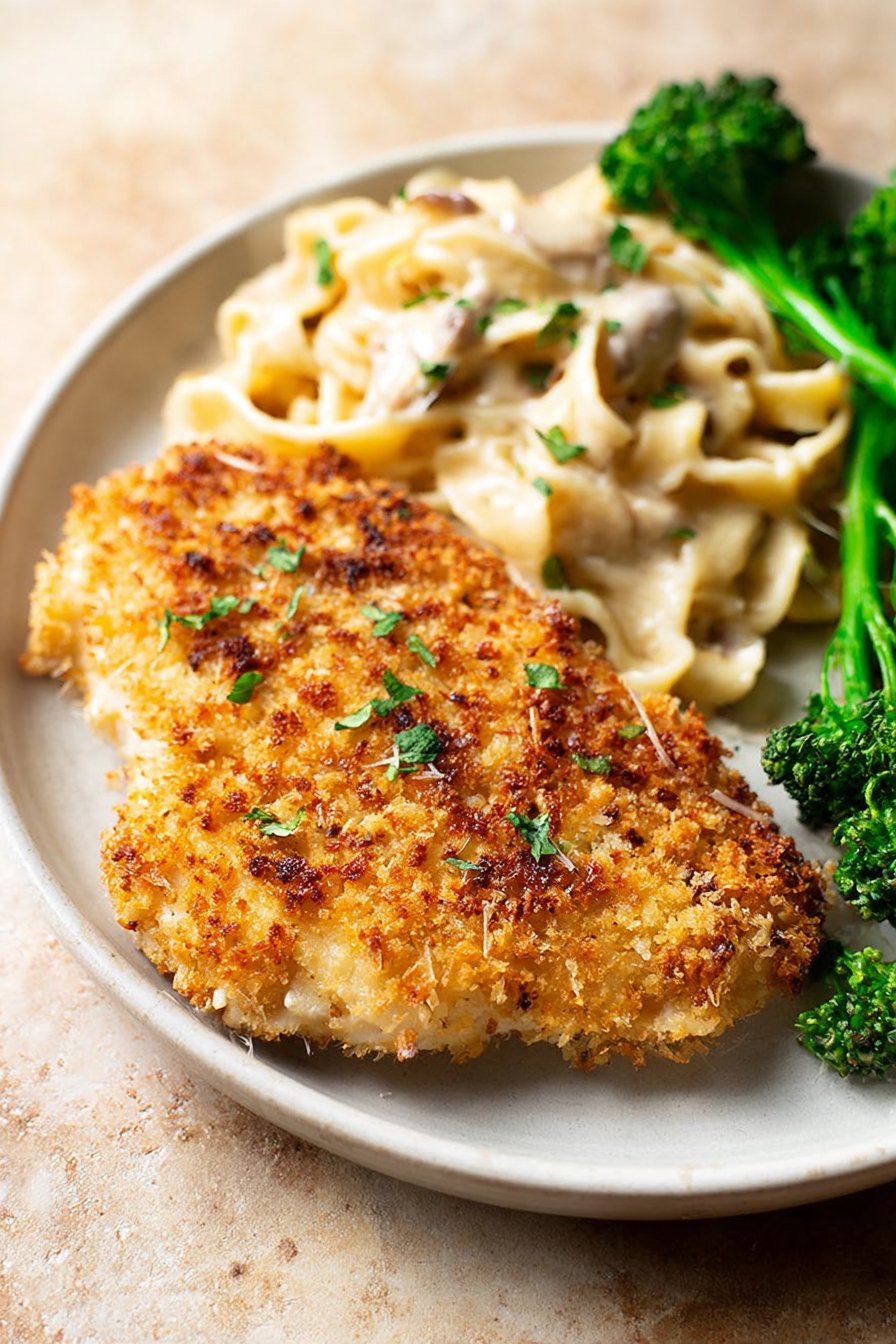
Pro Tips (Learned the Hard Way…)
- Don’t crowd the pan; I tried to fit all four pieces at once and just ended up steaming them. Soggy sad crust.
- Actually, I find it works better if you let the coated chicken sit for 5 minutes before cooking. The crust hangs on tighter.
- I once used way too much Parmesan and it all melted off. Stick to the measurements (roughly anyway).
- Oh, and if you want to save a pan, you can bake these at 425°F (about 220°C) for 20-25 mins on a rack, but keep an eye out so the cheese doesn’t burn.
FAQ (Questions I Get All The Time — No Joke!)
- Can I freeze Parmesan Crusted Chicken?
- Sure thing — let it cool, then wrap tight and freeze. I reckon it’s better freshly made, though. Reheat in the oven for best results.
- Can I use turkey instead of chicken?
- Absolutely, especially around the holidays when there’s random turkey breast going cheap. Just make sure it’s not too thick.
- What if I don’t have Parmesan?
- Well, technically it won’t be Parmesan Crusted Chicken, but I’ve used Pecorino or even sharp cheddar in a pinch. Different vibe, but still tasty.
- Why is my crust falling off?
- Ah, classic. Either the pan wasn’t hot enough or you moved it too soon. Or you missed the egg step (don’t laugh, I’ve done it!).
- Can I make this gluten free?
- Yep — just swap in your favorite gluten-free breadcrumbs. I hear ground cornflakes work too, though I’ve never tried it myself.
So that’s my somewhat rambling guide to Parmesan Crusted Chicken. Give it a try, and if it doesn’t come out perfect, just call it “rustic” — that’s what I do!
PS: If you want more inspiration, I sometimes browse The Kitchn for fun twists on weeknight recipes.
Ingredients
- 4 boneless, skinless chicken breasts
- 1 cup grated Parmesan cheese
- 1 cup breadcrumbs (preferably panko)
- 2 large eggs
- 1/2 cup all-purpose flour
- 1 teaspoon garlic powder
- 1 teaspoon dried Italian herbs
- 1/2 teaspoon salt
- 1/2 teaspoon black pepper
- 2 tablespoons olive oil
Instructions
-
1Preheat oven to 400°F (200°C). Line a baking sheet with parchment paper or lightly grease it.
-
2Pound the chicken breasts to even thickness. Season both sides with salt and black pepper.
-
3Set up three shallow bowls: one with flour, one with beaten eggs, and one with a mixture of Parmesan cheese, breadcrumbs, garlic powder, and Italian herbs.
-
4Dredge each chicken breast in flour, dip in egg, then coat thoroughly with the Parmesan-breadcrumb mixture.
-
5Heat olive oil in a large skillet over medium-high heat. Sear chicken breasts for 2-3 minutes per side until golden.
-
6Transfer chicken to the prepared baking sheet and bake for 15 minutes or until cooked through and crispy. Serve hot.
Approximate Information for One Serving
Nutrition Disclaimers
Number of total servings shown is approximate. Actual number of servings will depend on your preferred portion sizes.
Nutritional values shown are general guidelines and reflect information for 1 serving using the ingredients listed, not including any optional ingredients. Actual macros may vary slightly depending on specific brands and types of ingredients used.
To determine the weight of one serving, prepare the recipe as instructed. Weigh the finished recipe, then divide the weight of the finished recipe (not including the weight of the container the food is in) by the desired number of servings. Result will be the weight of one serving.
Did you make this recipe?
Please consider Pinning it!!

